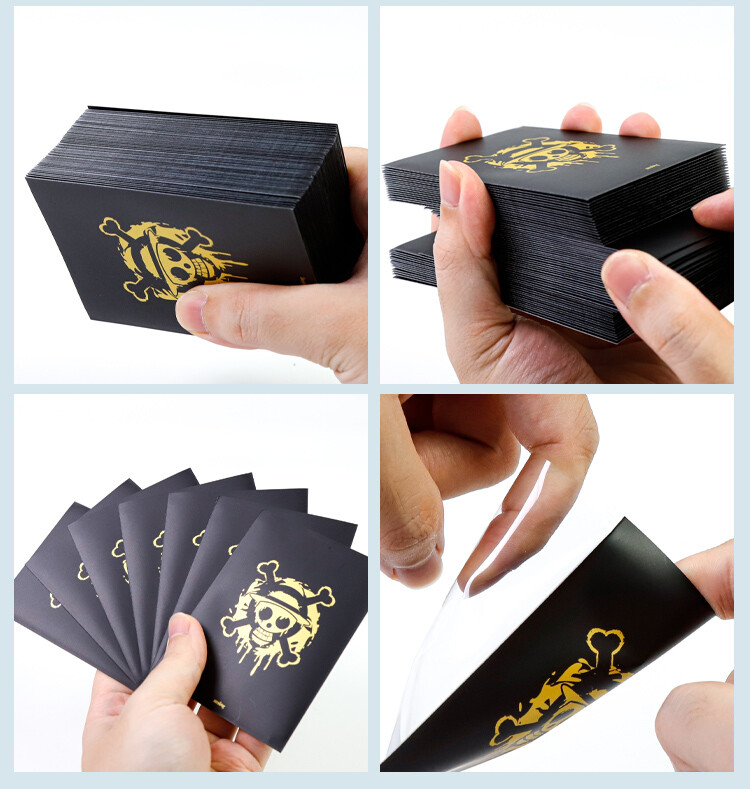

The Trading Card Game industry is facing an increasingly competitive landscape. With the introduction of highly anticipated TCG titles like Gundam (2024) and Disney Lorcana, IP owners and game companies are at a crossroads where the success of their brands hinges not only on game quality but also on the entire player experience, including the peripheral ecosystem of card accessories. As players' demands evolve, especially in terms of card quality, collectible value, and IP-related merchandise, game companies must find new ways to upgrade their offerings to stay relevant.
In this article, we will explore how brands can achieve successful upgrades through comprehensive, end-to-end services that span the entire process—from card design to the creation of customized card sleeves. This in-depth approach can address the industry's pain points and pave the way for a more sustainable and competitive future in the TCG market.
While the core product of any TCG remains the card itself, there has been a significant shift in how games are marketed and sold. Game companies are increasingly moving towards a "cards + peripheral ecosystem" model, where accessories such as card sleeves, play mats, and storage solutions play a pivotal role in enhancing the user experience. Companies like Magic: The Gathering and Yu-Gi-Oh! have led the charge in this direction, making it clear that peripheral products are no longer an afterthought but an essential component of a game’s identity.
Recent data highlights that 72% of players are willing to pay a premium for high-quality card sleeves. These sleeves are more than just protective accessories—they serve as an extension of the game's IP and directly influence user experience and brand loyalty.
These pain points underscore the need for an end-to-end solution—one that not only addresses the production of high-quality cards and sleeves but also creates a cohesive ecosystem that enhances the player's experience from design to delivery.

To address these challenges, game companies must partner with service providers who can offer an integrated, end-to-end solution. This means having a comprehensive service that covers everything from the design phase to manufacturing, quality control, and even packaging. A well-known Japanese TCG IP collaboration offers an excellent example of how such an end-to-end service can work in practice.
The brand upgrade process consists of three key stages:
The first step in upgrading a TCG brand is creating card designs that resonate with both the game's lore and the players' expectations. This is not just about designing visually appealing cards but also ensuring that all the peripheral products, such as card sleeves, match the game’s aesthetic. Here’s how this process unfolds:
Once the designs are finalized, the next step is moving to production. Here’s where the need for small-batch rapid sampling and high-quality control becomes critical:

The final piece of the puzzle is how the brand leverages the final product for marketing and player engagement. A successful brand upgrade does not stop at the production line—it extends to how the product is marketed and how players interact with it.
Choosing the right supplier is crucial for any game company looking to implement an end-to-end service solution. Based on research from over 50 game companies, there are four key criteria that companies prioritize when selecting a supplier:
The supplier should specialize in the TCG sector and have experience working with major IPs like Pokémon or Fate. Such suppliers understand the nuances of TCG products and can bring valuable insights to the table.
The supplier should be able to execute complex processes such as gold stamping, laser etching, and anti-counterfeit traceability. A supplier with high technical capabilities can handle the intricate demands of TCG products.
The supplier should offer tiered pricing and be able to optimize production processes, such as minimizing die-cutting waste (industry average ≤ 8%). This ensures that the production costs remain under control without compromising on quality.
The supplier must meet various industry certifications, including FSC, BSCI, Sedex/SMETA, GSV, and REACH environmental standards. Additionally, they should provide safety material testing reports to ensure that the products are both high quality and safe for consumers.
One notable example of how end-to-end services can drive brand success is the case of an original TCG that implemented the aforementioned solution. The results speak for themselves:
In today’s TCG market, card sleeves have evolved from a functional accessory into a powerful brand amplifier. By offering an end-to-end service that spans from design to delivery, game companies can ensure that their products not only meet players’ demands but also create a lasting brand identity. With a focus on quality, customization, and brand empowerment, card sleeves and related accessories are now key drivers of player engagement and long-term brand success.
Choosing the right supplier with the ability to offer a comprehensive, streamlined service is no longer optional but essential for any game company looking to stay competitive in an increasingly crowded TCG market.
